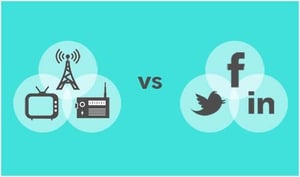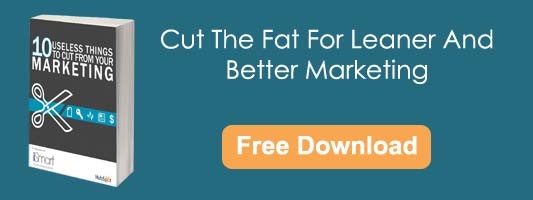By Abinaya Harish on Jul 6, 2015 9:30:00 AM

During an economic downturn, companies naturally look for ways to cut costs. This may mean that less budget would be channeled into marketing, but less marketing budget does not help to improve business. On the contrary, companies are encouraged to invest more into marketing during times of lean economy, yet doing more of the same marketing activities is not going to be effective and productive.
The best solution for B2B marketers is to constantly learn, unlearn and relearn new marketing strategies to keep up with the times. Traditional marketing (TM) is on the way out. Advertising on the TV and in newspapers, outdoor advertising, cold calling, email blasting etc. are not only costly and tedious, recipients of such ads perceive them as 'interruptive' too.
On the other hand, Inbound Marketing* (IM) is becoming the preferred choice for companies looking to reduce their marketing expenses while generating more sales leads and converting them into customers. Organizations using IM strategies are spending 62% less per lead than those companies using TM (source: 2013 State of Inbound Marketing).
Instead of investing into traditional marketing methods that are likely to be met with constant rejection, companies can utilize IM to focus on drawing in their ideal customers at a lower cost. Here are 3 big reasons why IM is better than TM:
1. IM costs less than TM: 3 out of 4 IM channels cost less than any outbound channel. IM strategies work by pulling potential customers in, through the creation of useful content which interests these prospects. For example, social media marketing costs almost nothing to start, but they can draw in a large volume of traffic to websites. Hence, while there is a low investment cost, Inbound Marketing can still pay handsome dividends.
Conversely, TM forces customers to accept the advertisements in an interruptive manner through 'push' marketing methods like email or telemarketing. Compared to IM, the relative inefficiency of TM means that companies using TM will have to invest a lot more resources into getting their desired amount of website visitors compared to companies using IM.
2. Better Targeting: 44% of direct mail is never opened. TM methods are also notorious for poorly targeting the audience. This can be an issue for niche businesses. When you do IM, you only deal with people who are already interested in your product. These are your ideal website visitors, as they are more likely to become sales leads. This would mean expenses are not wasted on reaching out to people with no interest in your product.
3. It is an Investment, Not an Ongoing Expense: When you buy pay-per-click advertising, its value is gone as soon as you pay for it. In order to maintain a position at the top of Google's paid results, you have to keep paying.
However, if you invest into creating quality content and other IM methods such as Search Engine Optimization (SEO), you will be right up there in the top search results until somebody displaces you. So from a cost perspective, IM is more sustainable than TM.
These are the advantages of Inbound Marketing over Traditional Marketing in this competitive world. Over the years, many organizations have shifted their marketing gear towards going Inbound. In fact, they increased their IM marketing budget to 50% in recent years and are reaping the benefits as 41% can measure considerable Return On Investment (ROI) from IM.
Today, the landscape of industries is rapidly changing and companies need to adapt, and that includes minimizing costs whenever possible. If your company is looking to cut costs, target more effectively and receive greater ROI, it should consider IM as a means to increase its digital presence.
* Inbound marketing is a form of digital marketing that involves SEO, social media, blog and landing pages to generate sales leads.






comments